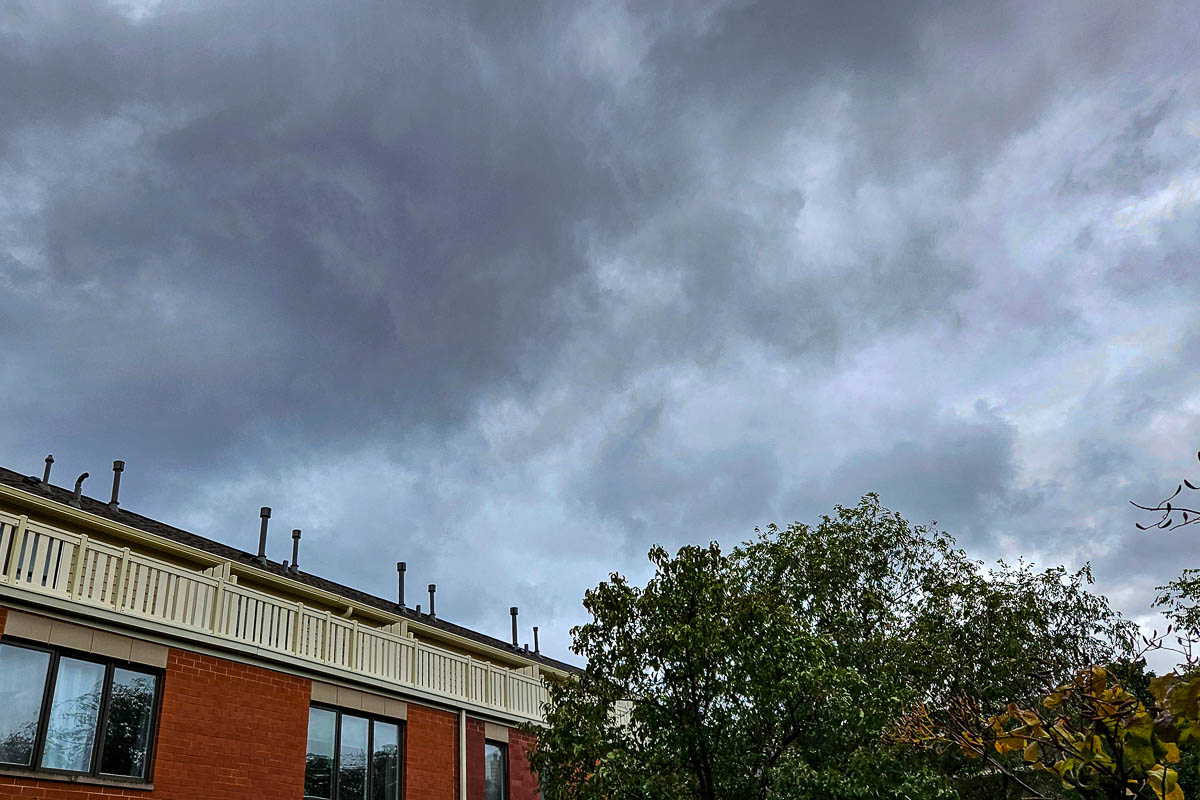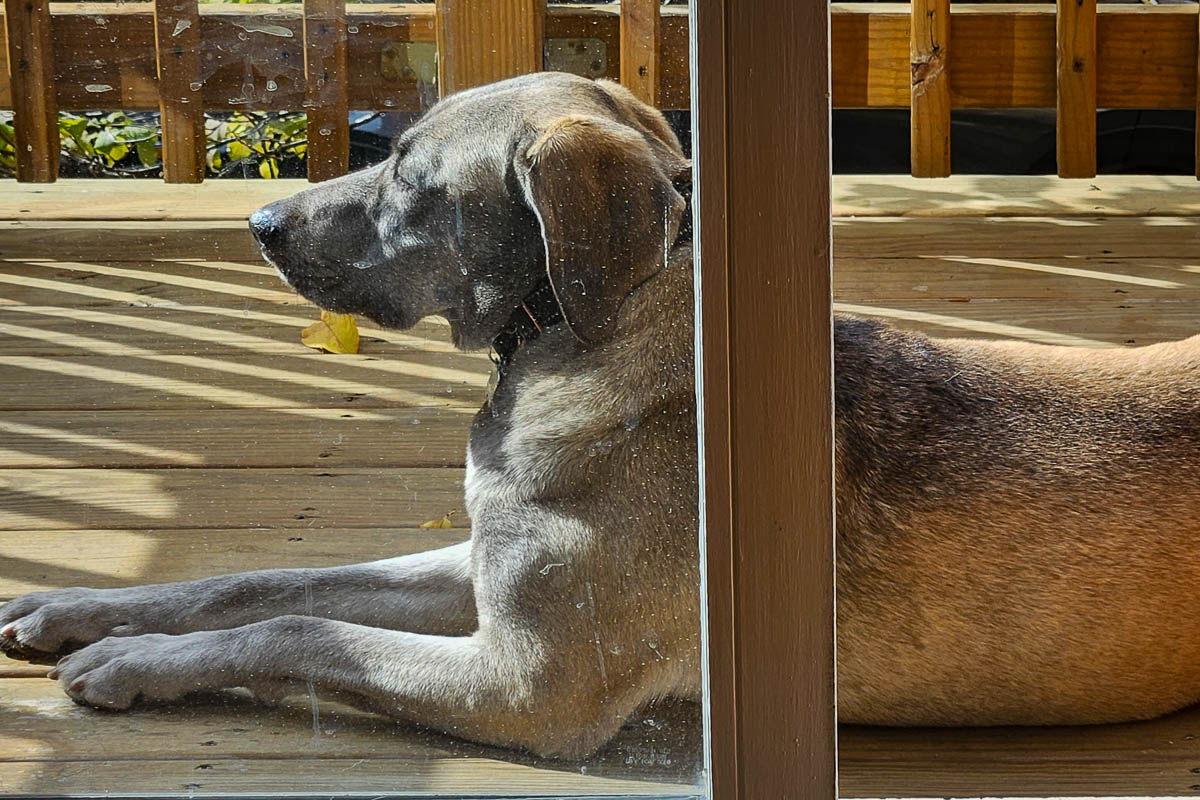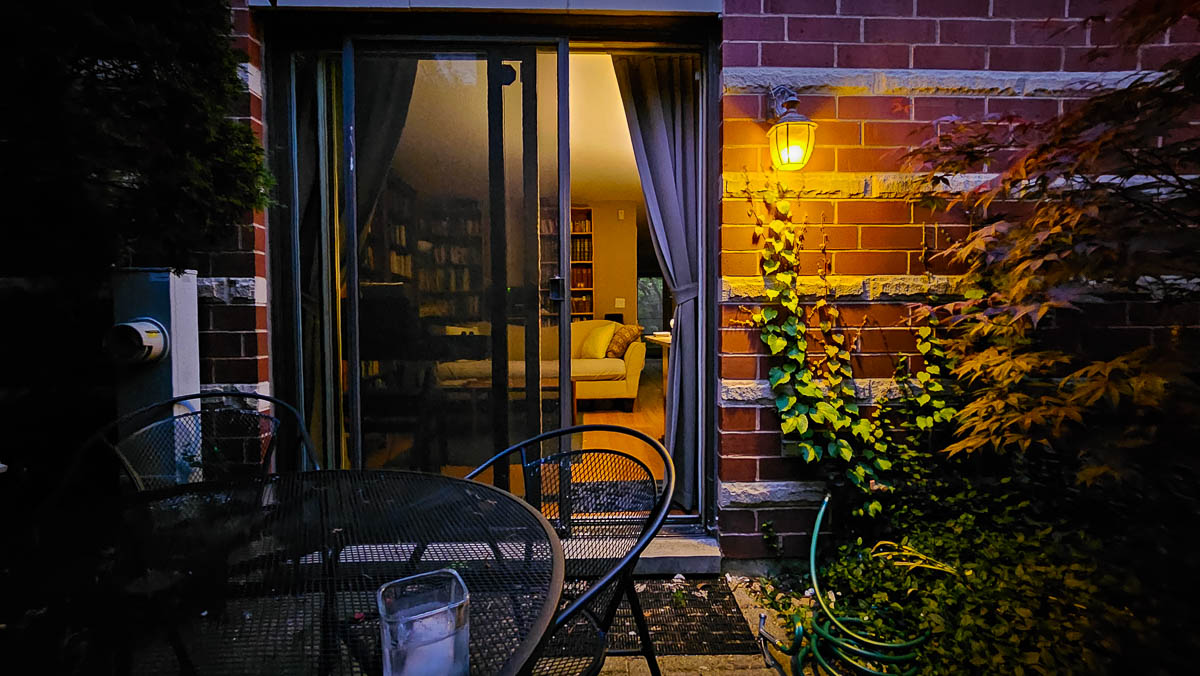Today's roundup includes only one Earth-shattering kaboom, for starters (and I'll save the political stuff for last):
- Scientists hypothesize that two continent-sized blobs of hot minerals 3,000 km below Africa and the Pacific Ocean came from Theia, the Mars-sized object that slammed into the Earth 4.5 billion years ago, creating the Moon in the aftermath.
- October was Illinois 31st warmest and 41st wettest in history (going back to 1895).
- National Geographic looks into whether the freak winter of 1719—that never really ended that year—could happen again.
- The world's last Beatles song, "Now and Then," came out today, to meh reviews all around.
- University of London philosophy lecturer Rebecca Roche extols the virtues of swearing.
- Charles Blow warns that House Speaker Mike Johnson (R-LA), who grew up in the same place, won't register for most people as the bomb-throwing reactionary MAGA Republican he is because "unlike Trump’s, Johnson’s efforts to undermine American democracy are served like a comforting bowl of grits and a glass of sweet tea. ... It’s not just good manners; it’s the Christian way, the proper Southern way. And it is the ultimate deception."
- At the same time, New York Times editorial board member David Firestone calls Johnson "deeply unserious." And Alex Shepherd shakes his head that Johnson has "already run out of ideas." And Tina Nguyen thinks he hasn't got a clue.
Finally, Asia Mieleszko interviews Jake Berman, whose new book The Lost Subways of North America reveals, among other things, that the Los Angeles electric train network used to have direct lines from downtown LA to Balboa Beach and Covina. ("I think that the original sin of most postwar cities was not in building places for the car necessarily. Rather, it was bulldozing large sections of the old city to reorient them around the car." Amen, brother, and a curse on the souls of 1950s and 1960s urban planners.)
Yesterday, during the eclipse, which I guess some people in the US and Mexico got to enjoy:

Gotta love Chicago during astronomical phenomena. Next April, I will make sure that I'm somewhere along the eclipse path where I can actually see the eclipse.
Today, though, we have much better weather, as Cassie will attest:

I've got chicken soup in my slow cooker, but I have two hours until I need to pull the chicken, so I'm going to go do nothing of value for a bit. With the dog.
Other things actually happened recently:
- Slate's Sarah Lipton-Lubet explains how the US 5th Circuit Court of Appeals and the US Supreme Court keep allowing straw plaintiffs to raise bullshit cases so they can overturn laws they don't like.
- Julia Ioffe, who has a new podcast explaining how Russian dictator Vladimir Putin's upbringing as a street thug informs his foreign policy today, doesn't think the West or Ukraine really need to worry about Robert Fico's election win in Slovakia.
- Chicago Transit Authority president Dorval Carter Jr. has a $376,000 salary and apparently no accountability, which may explain why we have some transit, uh, challenges in the city.
- The Bluewalker 3 satellite is the now 10th brightest thing in the sky, frustrating astronomers every time it passes overhead.
- An Arkansas couple plan to open an "indoor dog park with a bar" that has a daily or monthly fee and requires the dogs to be leashed, which makes very little sense to me. The location they've chosen is 900 meters from a dog park and about that distance from a dog-friendly brewery.
- Conde Nast Traveler has declared Chicago the Best Big City in the US.
Finally, as I write this, the temperature outside is 28°C, making today the fourth day in a row of July-like temperatures in October. Some parts of the area hit 32°C yesterday, though a cold front marching through the western part of the state promises to get us to more autumnal weather tomorrow. And this is before El Niño gets into full swing. Should be a weird winter...
House speaker Kevin McCarthy (R-CA) lost the first procedural vote to prevent a second vote aimed at kicking him out of the Speaker's chair, which will probably result in him getting re-elected in a few days. The Republicans in Congress simply have no one else who can get 218 votes for Speaker. Hakeem Jeffries (D-NY) would get 214, but no Republican would ever vote for him. And my party's caucus have absolutely no interest in helping the Romper Room side of the aisle get its own house in order.
Fun times, fun times.
In other news:
- Former US Representative Bob Inglis (R-SC) wants his party to grow up. Of course, he's (a) writing in (b) the New York Times, so there's little danger of the children currently running his party to read it.
- The US Supreme Court has the opportunity this term to undo a century of regulation, thrusting us back into the early Industrial Age and making life miserable for everyone in the country who doesn't have billionaire friends.
- Live attendance at performing arts events in Chicago has dropped 59% from pre-pandemic levels, which we in the Apollo Chorus have noted and do not like one bit.
- The Federal Emergency Management Agency will test the national alert system starting at 2:20 pm EDT tomorrow, most likely scaring the bejezus out of a sizeable portion of the Boomer generation.
- Chivas Bros. announced a plan to build a new distillery on Islay, which would be the 12th operating on the small island in the Western Hebrides. Seriously: the island is almost exactly the same size as the city of Chicago (620 km²) but with almost exactly 1,000th the population (3,000), and it will have twelve distilleries by 2026.
- A bar three blocks from my house bet everyone's drinks bill that the Chicago Bears would win their game against Kansas City on Sunday. They lost. In fact, the Bears are now the only major-league sports team in the United States that hasn't won since Elon Musk took over Twitter.
Finally, next week the western hemisphere will see an annular solar eclipse, so named because the moon won't completely cover it, leaving a ring (or annulus) of fire around it. Chicago will get to about 45% coverage, with maximum darkness around noon. Next April, however, we get a total solar eclipse, with the path of totality passing just a couple hundred kilometers south of us.
Since I live in a temperate climate, I think about seasons more than my friends who live in, say, San Jose, Calif. This becomes especially pronounced the closer we get to the equinoxes as the change in daylight hours peak then. On my walk with Cassie earlier today, I started thinking about how actually to quantify the lengthening shadows in autumn.
Here, then, is a chart of the position of the sun in Chicago for the first day of each month, along with its equivalent day on the other side of the equinox. For example, today the sun is about 63° above the southern horizon at solar noon—almost exactly the same as on May 1st. This means also that the day has about the same length (14 hours, 2 minutes), and the sun rises and sets in the same parts of the eastern and western skies, respectively.
Using the code I wrote for Weather Now, it took just a couple of minutes to generate the basic data for this chart. It should make sense right away, except for the column marked "Shadow." That's the length of the shadow cast per unit of hight at solar noon. So, for example, today's 63.3° sun angle gave a 10-meter building a shadow almost exactly 5 meters in length. The two days of the year (in Chicago, anyway) when the sun is 45° above the horizon—giving everything a shadow equal to its own height—are March 13th and September 30th.
Enjoy:
| Date |
Sunrise |
Sunset |
Daylight |
Rise |
Noon |
Set |
Shadows |
Same as |
| Jan 1 |
07:20 |
16:31 |
9:11 |
121° |
25° |
239° |
2.14 |
Dec 11 |
| Feb 1 |
06:35 |
17:07 |
10:02 |
112° |
31° |
248° |
1.67 |
Nov 10 |
| Mar 1 |
06:27 |
17:42 |
11:14 |
99° |
41° |
261° |
1.17 |
Oct 12 |
| Apr 1 |
06:35 |
19:17 |
12:42 |
83° |
53° |
277° |
0.76 |
Sep 11 |
| May 1 |
05:48 |
19:50 |
14:02 |
68° |
63° |
292° |
0.51 |
Aug 11 |
| Jun 1 |
05:19 |
20:21 |
15:01 |
59° |
70° |
301° |
0.36 |
Jul 11 |
| Jul 1 |
05:20 |
20:31 |
15:11 |
57° |
71° |
303° |
0.34 |
Jun 11 |
| Aug 1 |
05:45 |
20:10 |
14:25 |
65° |
66° |
295° |
0.45 |
May 11 |
| Sep 1 |
06:17 |
19:26 |
13:08 |
78° |
56° |
282° |
0.67 |
Apr 11 |
| Oct 1 |
06:48 |
18:34 |
11:45 |
94° |
45° |
266° |
1.01 |
Mar 12 |
| Nov 1 |
07:24 |
17:46 |
10:22 |
109° |
34° |
251° |
1.51 |
Feb 11 |
| Dec 1 |
07:00 |
16:21 |
9:21 |
119° |
26° |
241° |
2.03 |
Jan 11 |
Another thing I found interesting: notice how quickly shadows lengthen in the fall and shorten in the spring. That's what I noticed today, in fact: the east-west sidewalks were completely in shadow at noon today. They haven't been since, oh, the beginning of May.
Now, the date pairs should work for any point on earth, but all the other data will change. If you want to see your own location's sunrise and sunset times, go to Weather Now.
I think I finally cracked the nut on a work problem that has consumed our team for almost three years. Unfortunately I can't write about it yet. I can say, though, that the solution became a lot clearer just a couple of weeks after our team got slightly smaller. I will say nothing more. Just remember, there are two types of people: those who can infer things from partial evidence.
Just a few articles left to read before I take Cassie on her pre-dinner ambulation:
- Titanic director James Cameron, who has made 30 dives to the famed wreck, slammed the news media for "a cruel, slow turn of the screw for four days" as he, the US Navy, and probably most of the rescuers already figured out the submarine Titan had imploded on its descent Sunday morning.
- The US Navy in turn reported that its Atlantic sonar net had picked up the implosion when it happened, but didn't explain (see re: inferences, above) that it waited until the accident had been confirmed by other sources because the Navy's sonar capabilities are highly classified military secrets. And since the Titan didn't have any kind of black-box recorder, they would not make any effort to bring it up from the bottom.
- New York Times columnist Jesse Wegman slaps his forehead and asks, "Does Justice Alito (R) hear himself?" (See re: inferences, above.) James Fallows argues that "it is time for outside intervention, and supervision" of the Court. Josh Marshall sees the "fish and flights" as emblematic of deeper corruption: "The guiding jurisprudence might best be described as 'Too bad, suckas' or perhaps 'Sucks to be you.' "
- Biologists Jerry A Coyne (University of Chicago emeritus) and Luana S Maroja (Williams College) argue that ideology is "poisoning" the study and teaching of biology.
- The 2 quadrillion liters (give or take) of groundwater we humans have pumped out in the last 30 years found its way to the oceans, redistributing the mass of the earth and shifting our planet's axis by about 800 mm—not enough to change the seasons, but enough to subtly interfere with global positioning and astronomy.
- LEDs in street lights and houses have added about 10% more light pollution to our skies each year, according to new research. Of course, LEDs provide more light and save 90% of the energy we used to waste on incandescent and nonmetal-vapor lights, so...
And finally, the Illinois legislature extended by 5 years the Covid-era regulations allowing restaurants to sell go-cups. We're not New Orleans by any stretch, but you can continue to take that margarita home with your leftover burritos.
I will now retire to my lovely patio...

But for me, it was Tuesday:
- The Democratic National Committee has selected Chicago to host its convention next August, when (I assume) our party will nominate President Biden for a second term. We last hosted the DNC in 1996, when the party nominated President Clinton for his second term.
- Just a few minutes ago, Manhattan District Attorney Alvin Bragg filed suit in the Southern District of New York to enjoin US Rep. Jim Jordan (R-OH) from interfering in the prosecution of the XPOTUS.
- Speaking of the House Moron Caucus, Jonah Goldberg worries that the kids following people like Jordan and the XPOTUS have never learned how to behave in public, with predictable and dire consequences for public discourse in the future.
- And speaking of, uh, discourse, New York Magazine features Stephanie Clifford (aka Stormy Daniels) on its cover this week, in which the actor describes her meeting in 2006 with a "pop-culture curiosity" years before destroying American democracy even entered into his dementia-addled brain. It...isn't pretty.
- Jennifer Rubin thinks the Religious Right's "victory" in politicizing the Federal judiciary will cripple the Republican Party. (I believe she's right.)
- Today I learned that Guthrie's Tavern did not die during the pandemic, and in fact will offer free hot dogs during Cubs home games to all paying customers (while supplies last).
- Rishi Shah and Shradha Agarwal, the CEO and president of Chicago tech company Outcome Health, were convicted on 32 counts of fraud and other crimes for their roles in stealing investors' money.
- The Hubble Space Telescope has detected a runaway black hole moving close to 1,000 km/s with a 200,000-light-year tail of baby stars following it. (Those baby stars happened because at that speed, it wasn't able to pull out in time...)
- MAD Magazine cartoonist Al Jaffee, inventor of the Fold-In, died Monday at 102.
Finally, Tupperware has warned its creditors and shareholders that it may go out of business in what I have to call...an uncontained failure of the company.
I've had a bunch of tasks and a mid-afternoon meeting, so I didn't get a chance to read all of these yet:
Finally, close to me, after the lovely Grafton Pub closed last August, the Old Town School of Folk Music stepped in to buy the space. But that plan has hit a snag after a higher bidder emerged.
At my day job, we just ended our 80th sprint on the project, with a lot of small but useful features that will make our side of the app easier to maintain. I like productive days like this. I even voted! And now I will rest on my laurels for a bit and read these stories:
Finally, the European Space Agency wants to establish a standard time zone for the moon. Since one day on the moon is 29.4 days here, I don't quite know what that will look like.
I have no idea. But today I managed to get a lot of work done, so I'll have to read these later:
Finally, if you live in Chicago and look straight up and slightly north with binoculars tonight, you might see a little green comet that last passed Earth 50,000 years ago.